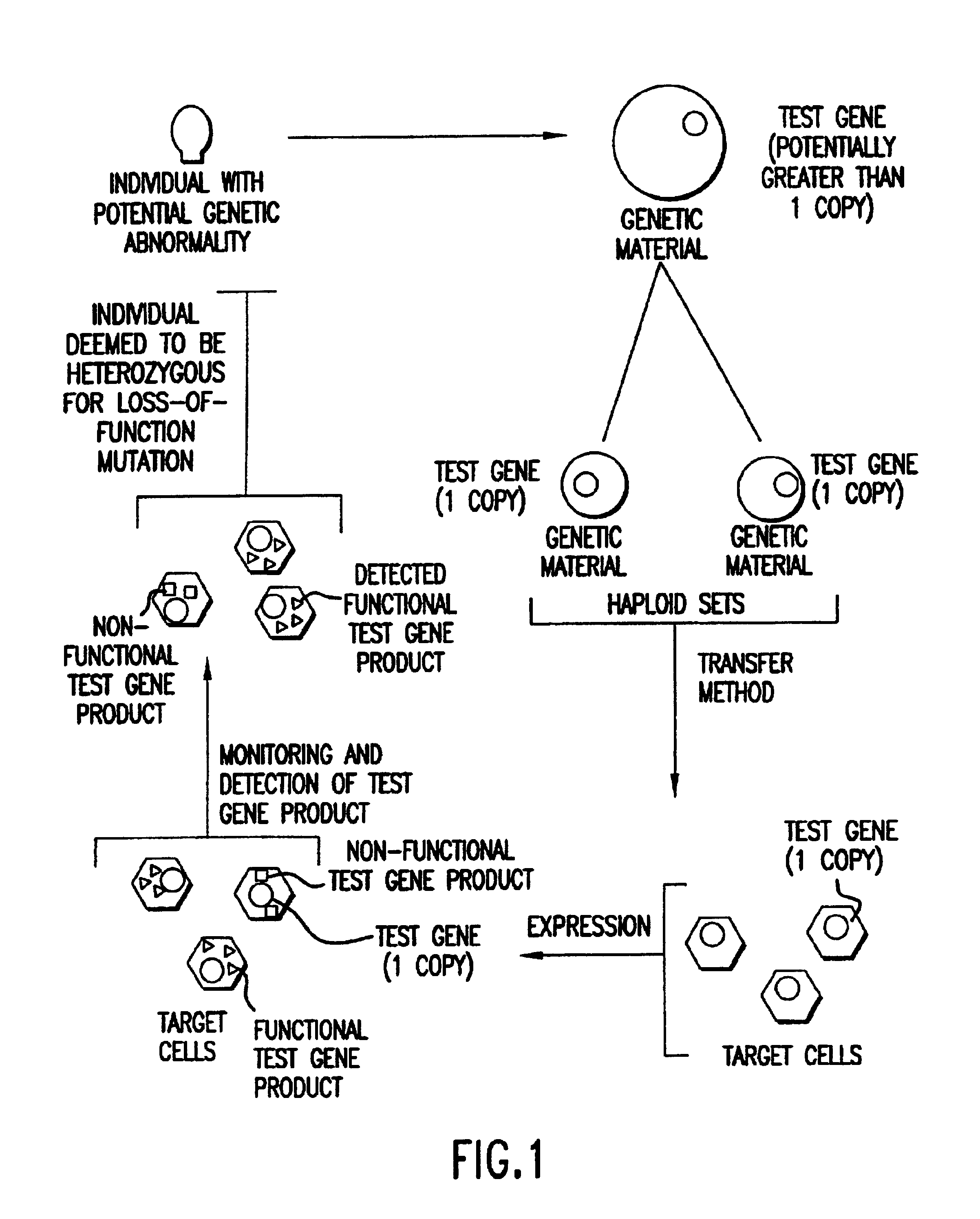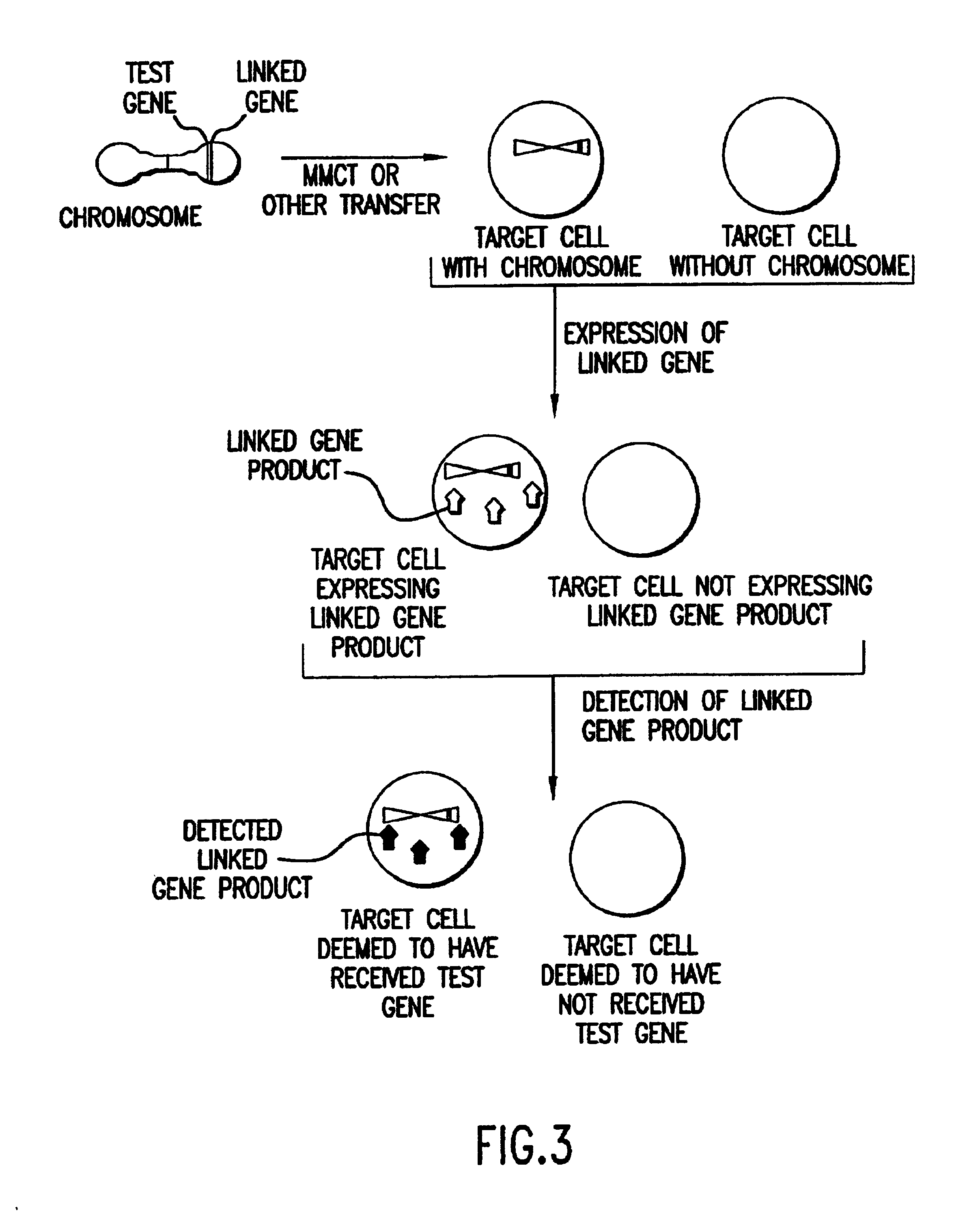Method of detection and interpretation of mutations through expression or function tests of haploid genes
a technology of haploid genes and expression or function tests, applied in the field of detection of disease-causing mutations, can solve the problems of labor-intensive and costly, complex and challenging detection task, and common problem of inherited genetic diseases for humans and other animals
- Summary
- Abstract
- Description
- Claims
- Application Information
AI Technical Summary
Benefits of technology
Problems solved by technology
Method used
Image
Examples
example 1
Selection of a Test Gene
Familial hypercholesterolemia results from a heterozygous or homozygous loss-of-function mutation in the LDLR gene. Approximately 1 in 500 individuals in the general population are heterozygous for the loss-of-function mutation. Molecular confirmation of the diagnosis is not readily available. This presents a problem particularly in regards to the certainty of diagnosis and counseling of relatives of the disease sufferers. Thus, application of the methods of the invention to this disease may result in more accurate detection and better counseling of those predisposed to or with familial hypercholesterolemia. It may also result in more efficient and cost-effective diagnosis. Finally, application of the methods of this invention to study familial hypercholesterolemia in the laboratory may lead to a better understanding of the disease or more effective or specific treatments. Thus, the LDLR gene is an excellent test gene for the method of this invention.
example 2
Selection of Donor Cells
As described above, biopsies and the products of other invasive methods have been previously used in MMCT and other cell fusion techniques to produce haploid hybrid cells. Obtaining such samples is costly, time-consuming and sometimes uncomfortable for the patient. To avoid such problems, lymphoblasts were selected as the donor cells for these experiments. Lymphoblasts are readily obtainable from whole blood, the collection of which is routine and minimally invasive. Use of whole blood also save times and money, since a portion of the sample may be used for other medical testing. Lymphoblasts may be obtained from whole blood by a variety of methods, including centrifugation in a Ficoll gradient. Finally, lymphoblasts are a useful donor cell for the LDLR gene because they constitutively express the gene. Thus, there is no necessity to reactivate a non-active gene before it may be expressed in the target cells.
example 3
Selection of Target Cells and Test Gene Transfer Method
CHO cells were selected as the target cells because they are a hardy, readily available, and well-characterized cell line. Additionally, CHO cells do not express LDLR, but have been shown to be capable of expressing the fully functional protein in Corsetti et al. (1991).
MMCT was selected as the test gene transfer method, since it represents the most efficient means to date of transferring a chromosome or chromosome fragment from one cell to another. Transfer of an entire chromosome was desirable to preserve linkage of the LDLR gene to the gene for the surface antigen ICAM-1.
MMCT largely as described in Killary et al., and partially as further described in Example 4 below was used to transfer human Chromosome 19 comprising the wild type LDLR gene to CHO cells. The CHO cells were then incubated with dil-LDL as in Corsetti et al. After incubation, CHO cells with Chromosome 19 showed intense, cytoplasmic staining on microscope slide...
PUM
| Property | Measurement | Unit |
|---|---|---|
| genetic disorder | aaaaa | aaaaa |
| density | aaaaa | aaaaa |
| fluorescence | aaaaa | aaaaa |
Abstract
Description
Claims
Application Information
 Login to View More
Login to View More - R&D
- Intellectual Property
- Life Sciences
- Materials
- Tech Scout
- Unparalleled Data Quality
- Higher Quality Content
- 60% Fewer Hallucinations
Browse by: Latest US Patents, China's latest patents, Technical Efficacy Thesaurus, Application Domain, Technology Topic, Popular Technical Reports.
© 2025 PatSnap. All rights reserved.Legal|Privacy policy|Modern Slavery Act Transparency Statement|Sitemap|About US| Contact US: help@patsnap.com



